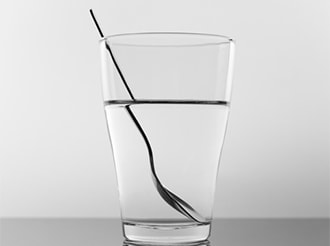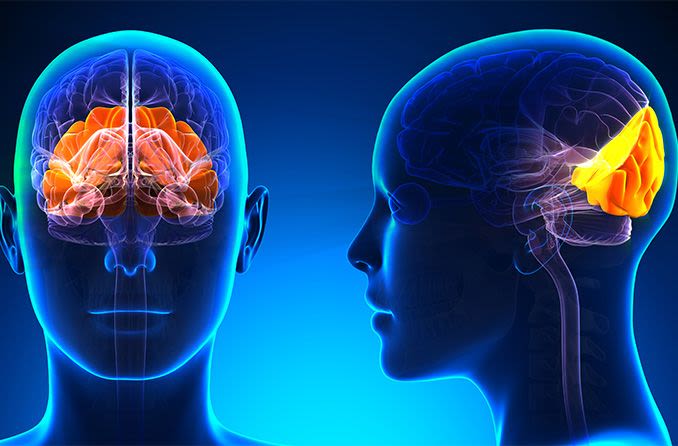Refraction is the bending of a wave as it passes at an angle through something with a different density. Refraction can happen to any energy that travels in waves, like sound, heat or light. We’ll zero in on refraction of light in this article because it’s so important to vision.
Refraction has three requirements:
- A transparent medium
- Different densities
- Waves moving at an angle
Let’s talk about each of those separately.
A transparent medium
Transparent means see-through. Medium means a substance that waves pass through. Thus, a transparent medium is a see-through substance like air, glass, plastic, water — or the cornea and lens in your eye.
Different densities
Think about a ray of light traveling from the sun to the earth. If this ray hits the moon, it bounces off, creating the reflection you see in the night sky. The moon is solid rock, which is so dense that light can’t pass through it.
Something else happens if the light hits something with a lot less density.
Imagine our ray of light missing the moon. It keeps moving in a straight line at 186,000 miles per second until it reaches the earth’s atmosphere, which is transparent. Here, the light ray slows down a bit because our planet’s air is more dense than the vacuum of space.
The same process happens when light passes through the lens of a camera. A lens is far more dense than air. Any light waves passing through the lens will move slower, causing the waves to refract (the scientific word for “bend”).
Waves moving at an angle
If our single ray of sunlight hits the surface of the Atlantic ocean straight down at an exact 90-degree angle, it will pass through the water — but it will not bend. This is because refraction of light happens only when the rays hit the transparent medium at an angle.
This angle is crucial to the lenses used in microscopes, telescopes and eyeglasses that correct vision. Convex and concave lenses use curved surfaces to refract light in specific directions to reveal tiny life forms and the distant reaches of the cosmos. And they give us better eyesight.
READ MORE: Infographic: How eyeglasses work and a history of glasses











